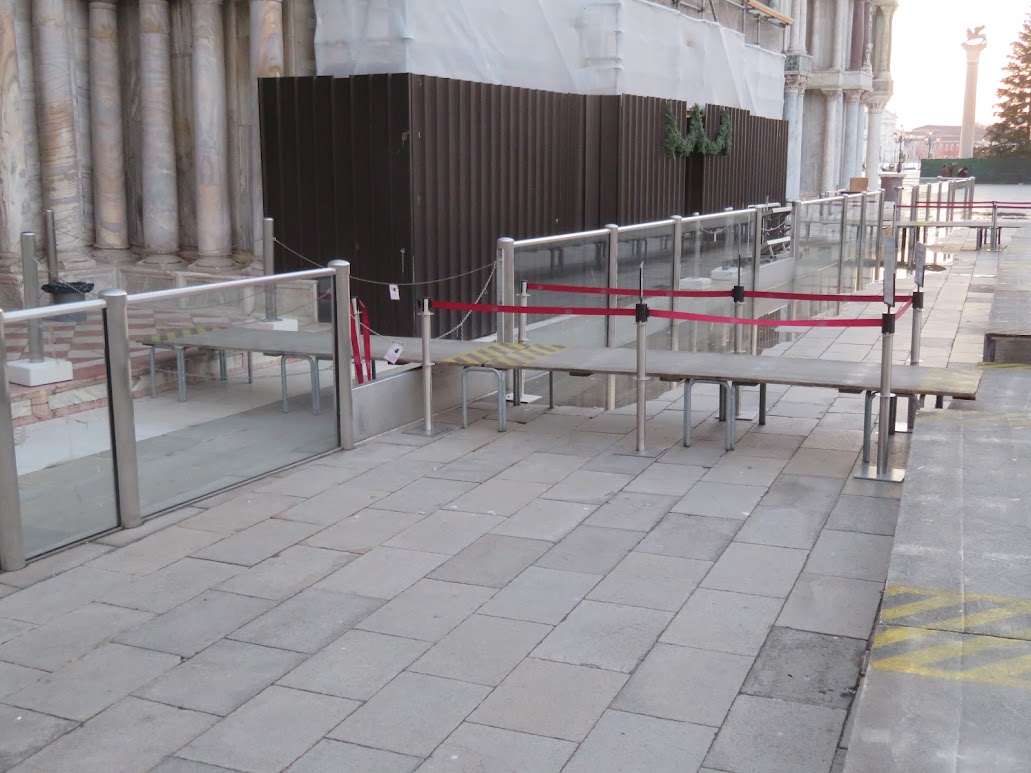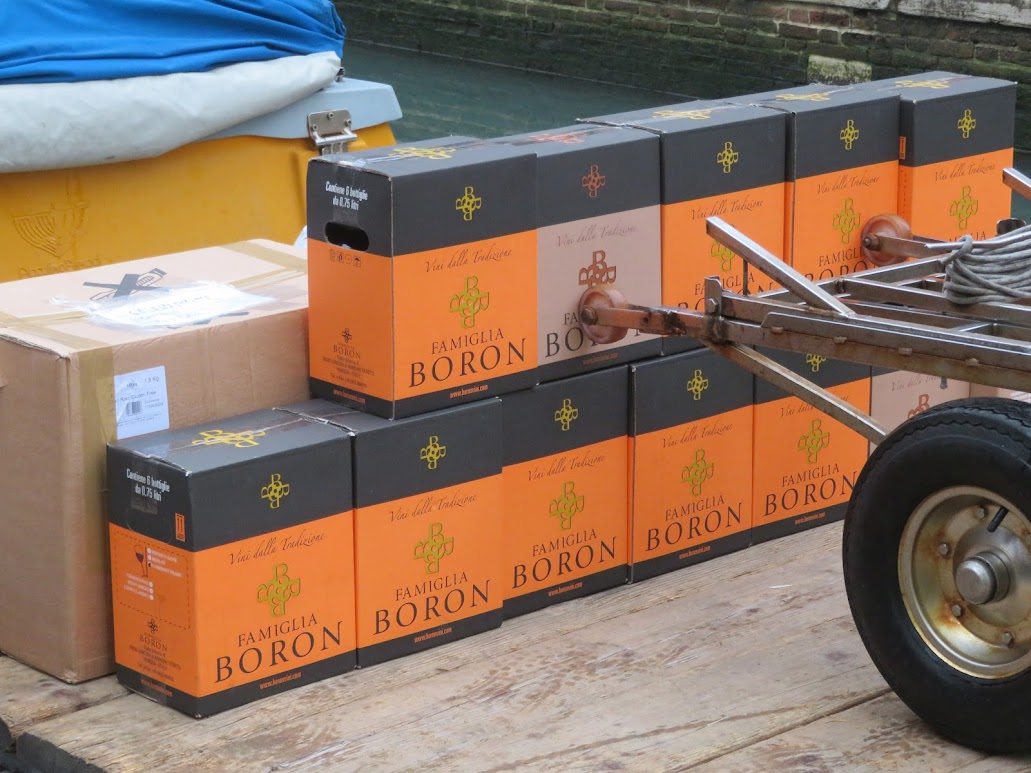
While we’re on the subject of food — and when are we not? — here are a few worthy character actors on the great Venetian culinary stage who may have been hidden in the swarm of the stereotypical food cluttering every Venetian menu.
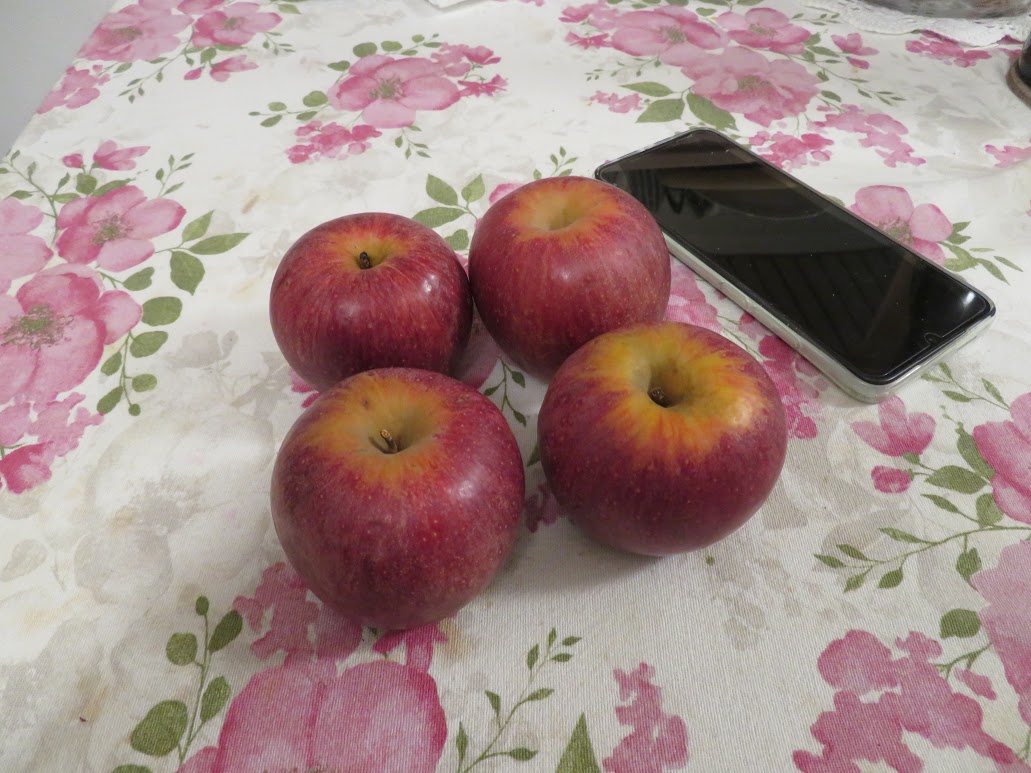
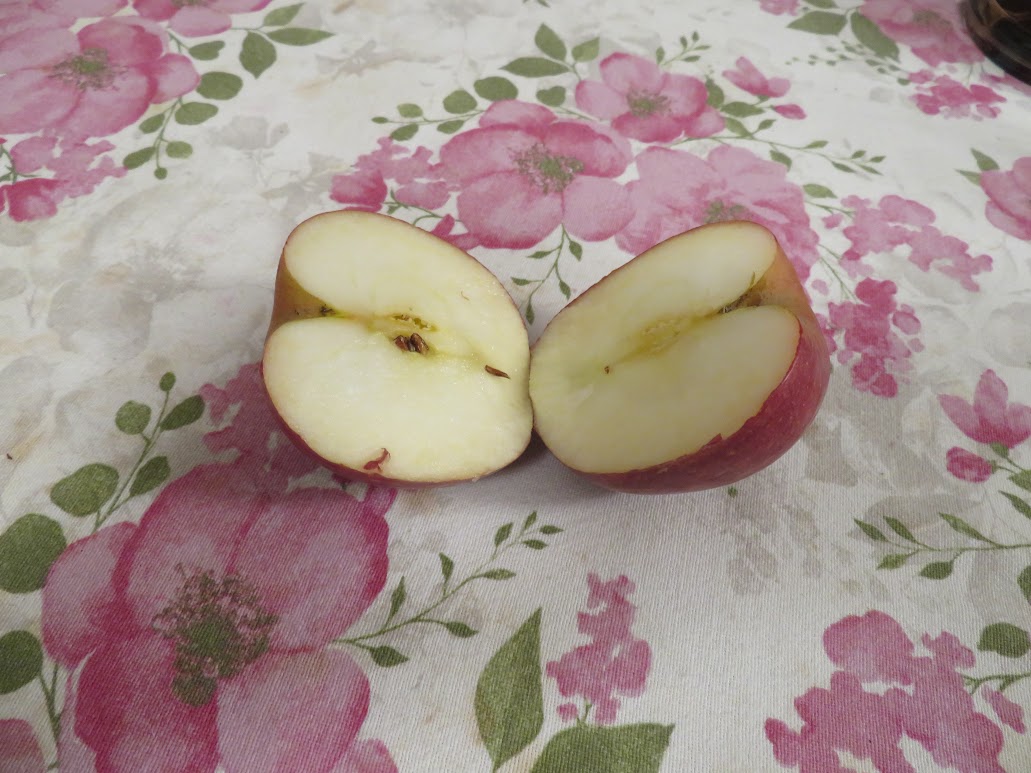
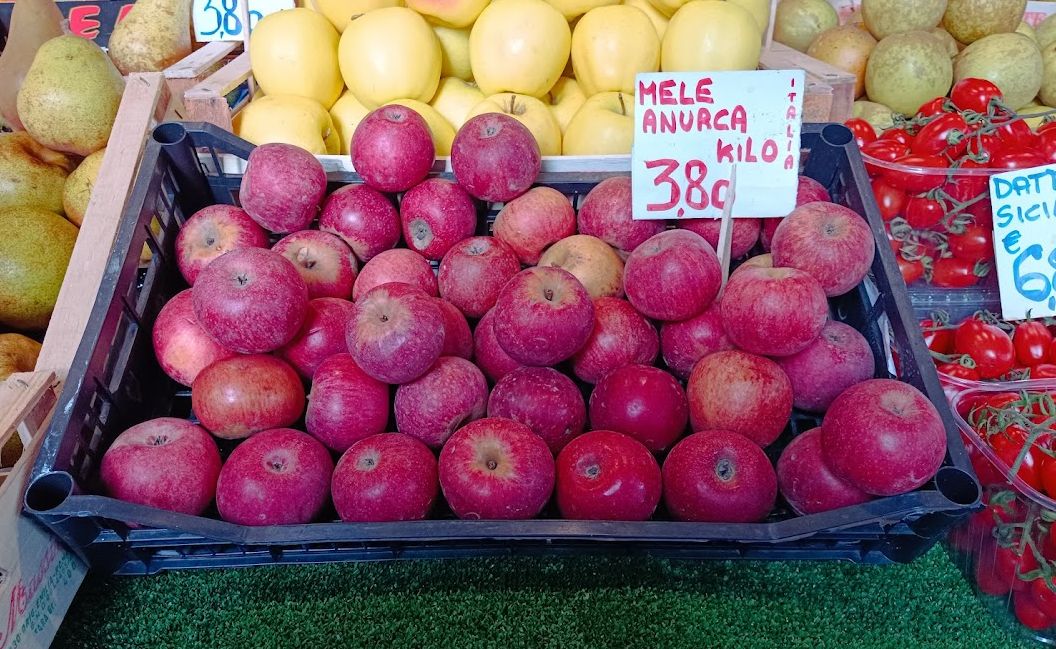
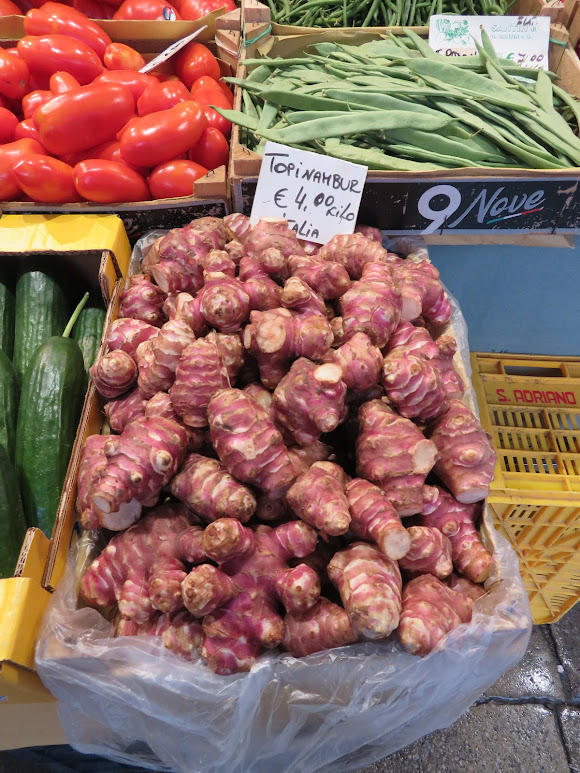
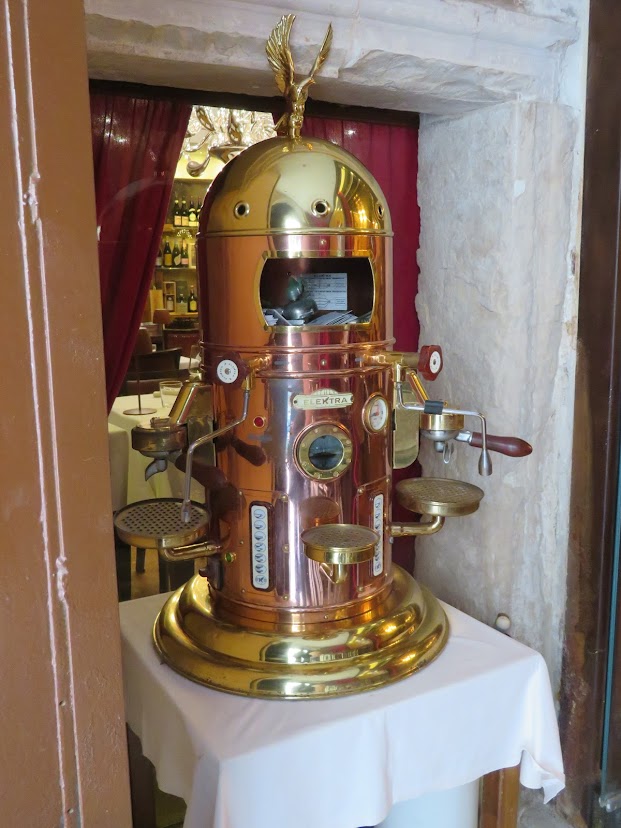
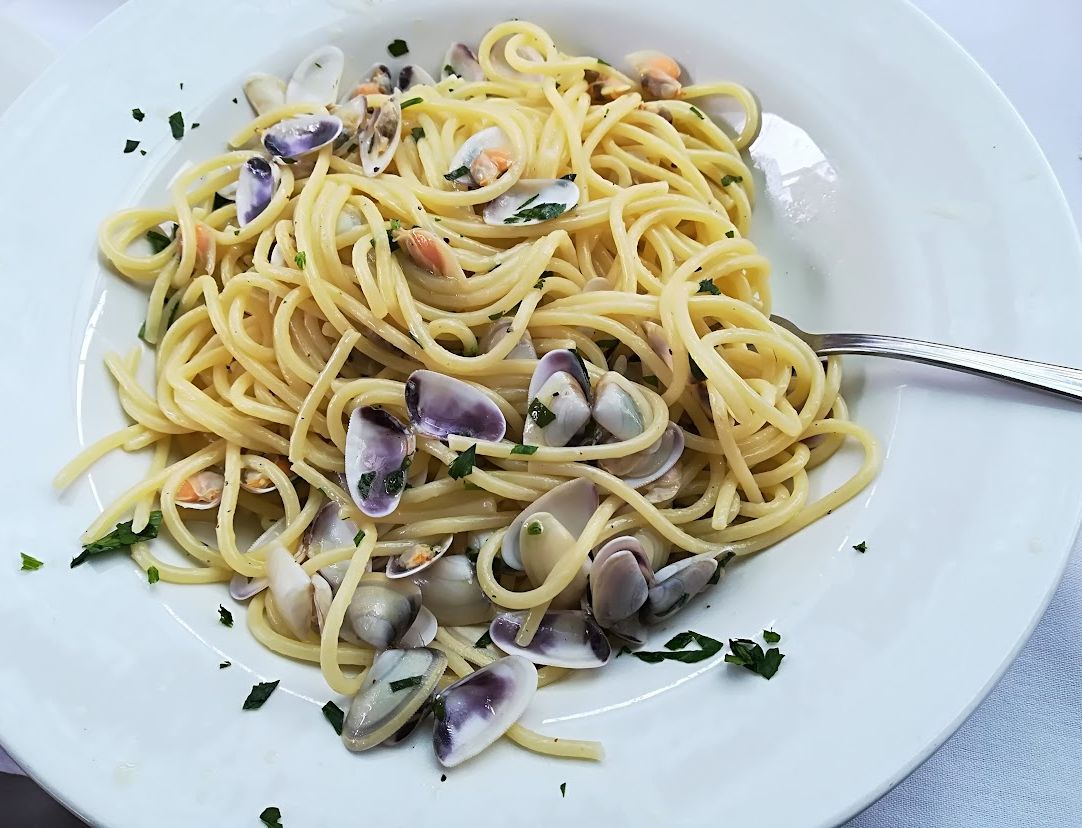
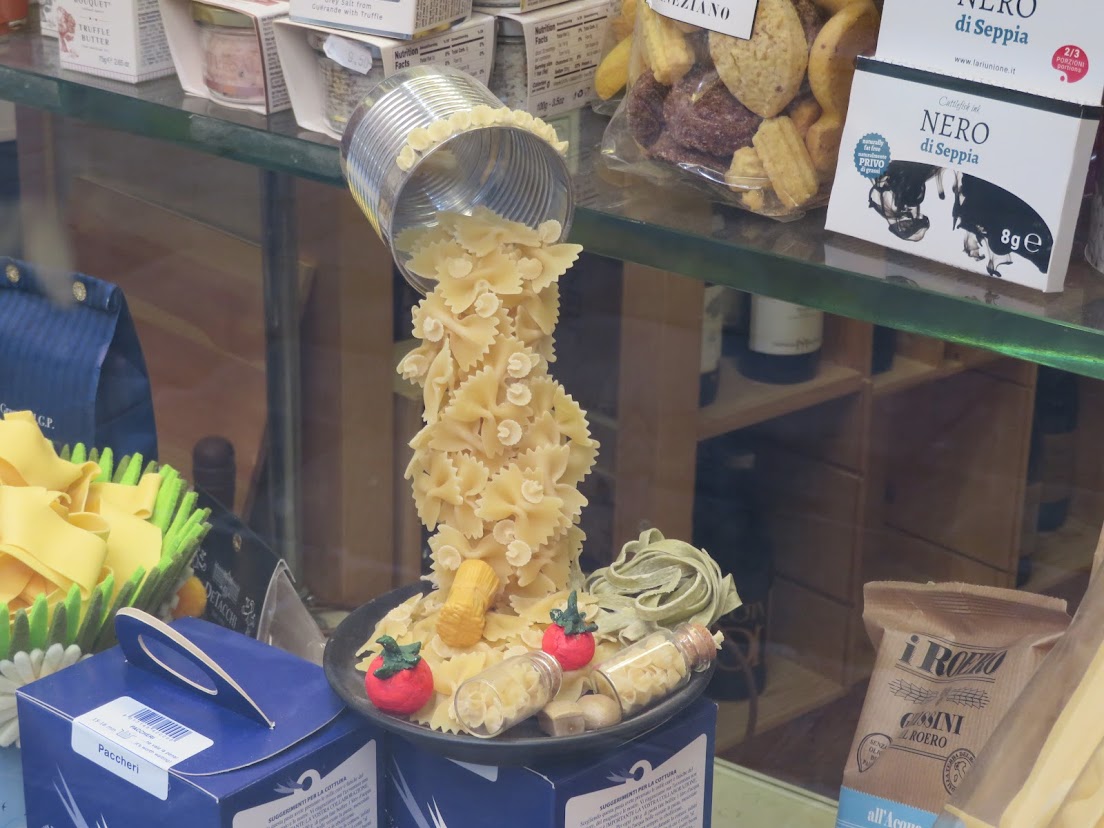
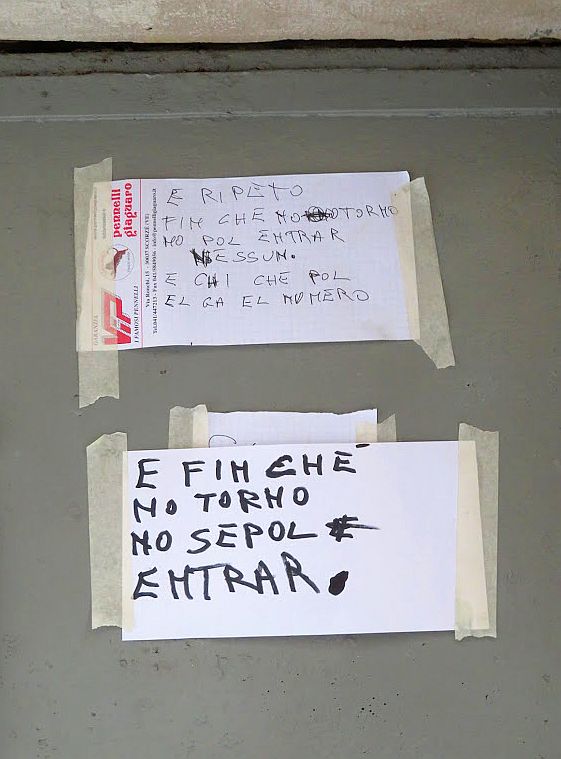


While we’re on the subject of food — and when are we not? — here are a few worthy character actors on the great Venetian culinary stage who may have been hidden in the swarm of the stereotypical food cluttering every Venetian menu.










January 27 is International Holocaust Remembrance Day. Unfortunately today is also the beginning of Carnival, which makes anybody who cares even a little bit about one or the other — or worse, both — feel a tad awkward.
But I’m proceeding with Remembrance Day because it is an especially appropriate moment to remember doctor and professor Giuseppe Jona, once known as the “doctor of the poor” for his charitable care of indigent Venetians of every, or no, creed.
He didn’t limit his attention only to sickbeds. Among many other things, he was also the president of the Jewish community, and on September 15, 1943 he cared for his endangered people by making the ultimate sacrifice. In a sense he was killed by the Nazi occupiers of Venice, but he got one step ahead of them.
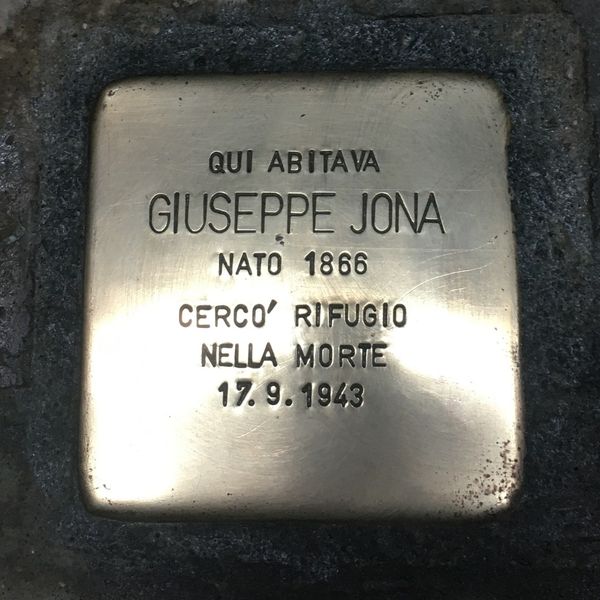
No need for me to be melodramatic. The facts are enough to delineate a person whom it’s unlikely anyone reading this could imagine emulating, but who must never be forgotten.
Giuseppe Jona (pronounced YOH-na) was born in Venice in 1866, the fourth of five children of a middle-class Jewish family, his father a doctor. He graduated from the University of Padova in Medicine, and served as professor of Anatomy at Padova as well as working at Venice’s hospital. Over the course of 40 years he became head of the department of Pathology (1905 – 1912), and Medicine (1912-1936).
Unmarried, he “lived for his brothers and nieces/nephews,” says one article about him, “for his students and colleagues, for social projects and scientific research.” Above all, he was dedicated to developing young doctors at the hospital’s “Practical School of Medicine and Surgery,” founded in 1863 to enable department heads to prepare young doctors by taking them on rounds in the wards. He also introduced a methodic approach to performing autopsies, and served as an auxiliary doctor in military hospitals during World War I.
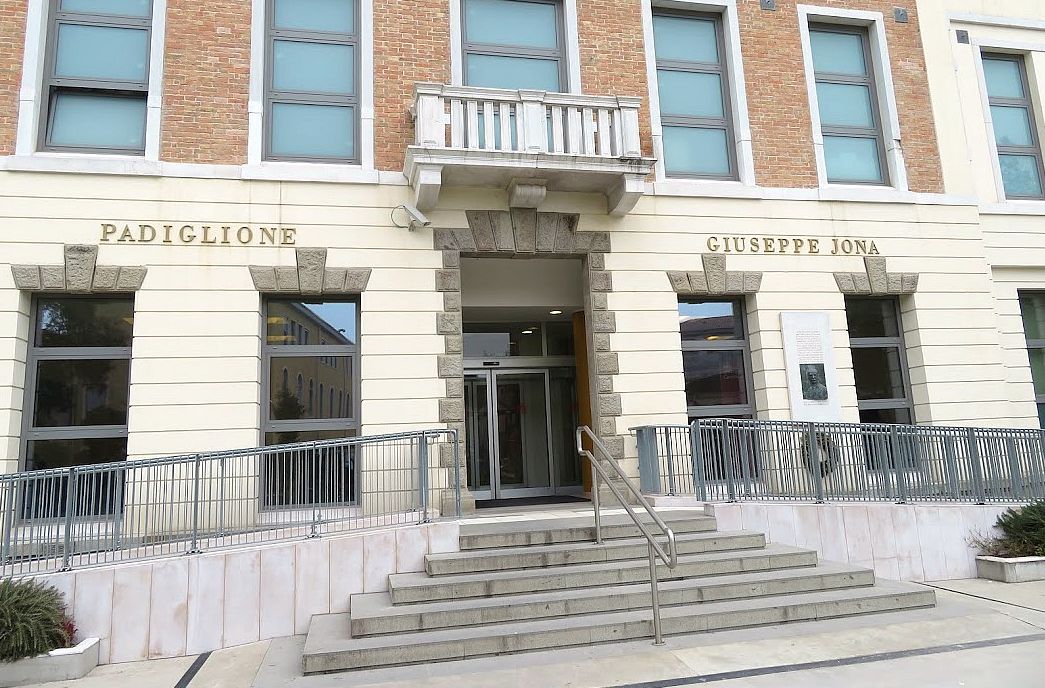
His world stretched far beyond medicine, though. He became a member of the Istituto Veneto di Scienze Lettere ed Arti, and was president of the Ateneo Veneto (the supreme intellectual group in Venice, I’m going to say) from 1921 to 1924. He founded a circulating library. He founded a museum of anatomy at the city hospital. I’m leaving out enormous masses of information but the point is that he was known and esteemed by Venetians in many different fields and levels.
Now we get to the heart of the man. Along with his sister, he always sought out the neediest patients in several hospitals, convinced that it was a human obligation to try to mitigate social inequality regardless of religion or belief. He then opened a medical studio where he treated the poorest patients free of charge. He came to be commonly referred to as “the doctor of the poor.”
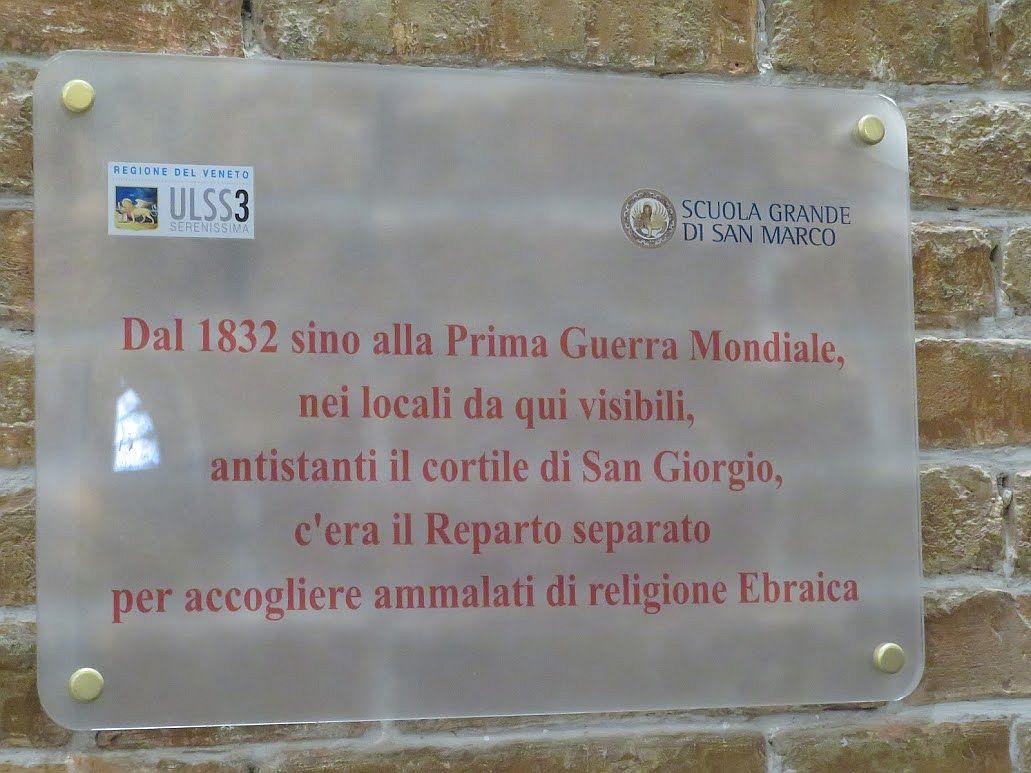
He resigned his position at the hospital in 1936, probably intuiting that what became the “racial laws” in 1938 were already on the horizon, edicts that would have required his expulsion from the hospital, followed by expulsion from the scientific and cultural institutions to which he belonged. In 1940, along with every other Jewish physician, his name was removed from the official register of doctors, thus being forbidden to care for any patients whatever. (He continued to visit them at night, wrapped in a vast cloak and hat.)
At that moment, the rabbi and council of the Jewish congregation, perfectly aware that Jona had never attended the synagogue and wasn’t known even to be a believer, elected him as president of the Jewish community. With his sensitivity to ethics and as a sign of respect to his parents, he accepted.
Of course matters became steadily worse. Friends and colleagues urged him to leave Venice and flee to hiding in the countryside; he refused.
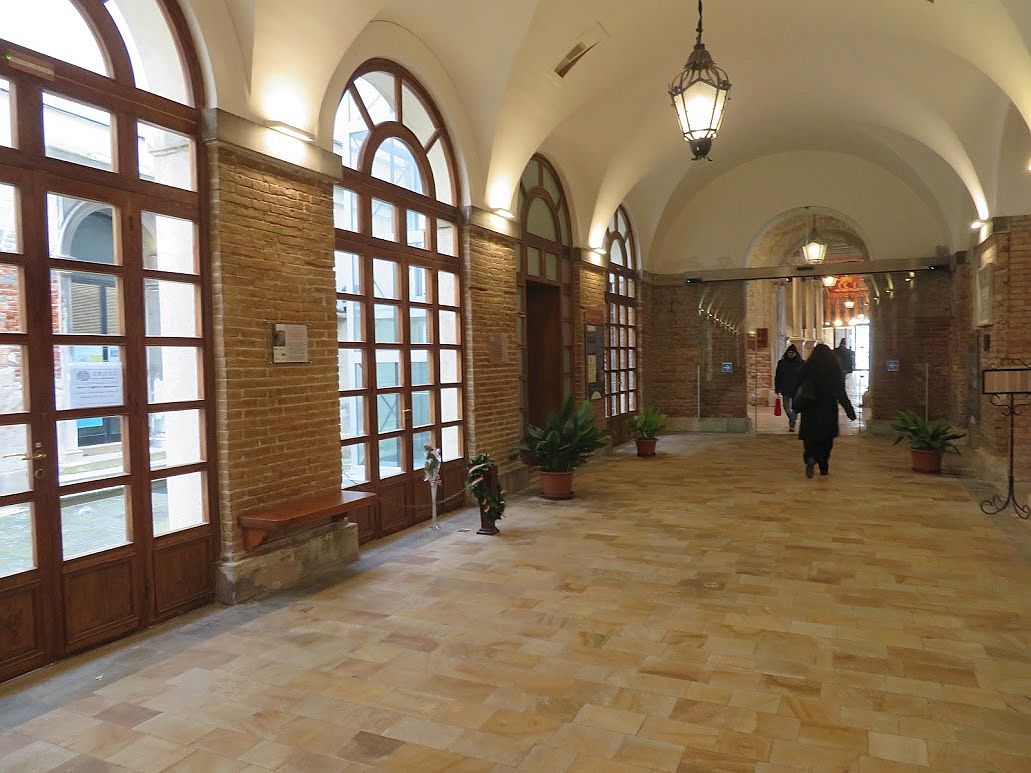
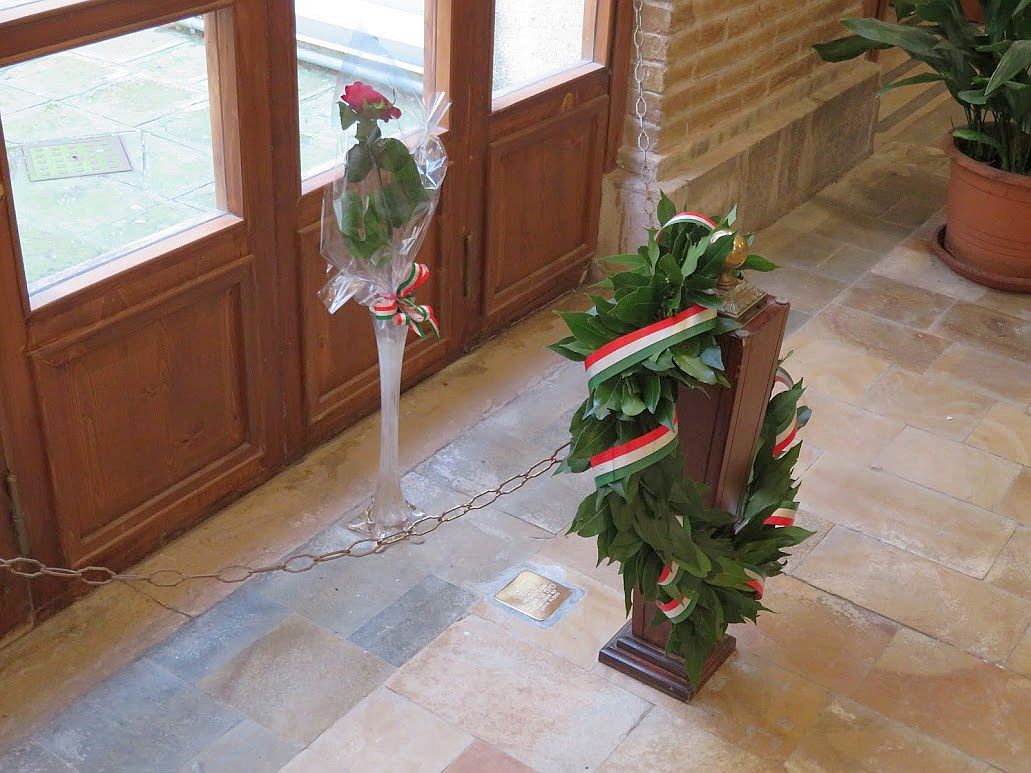
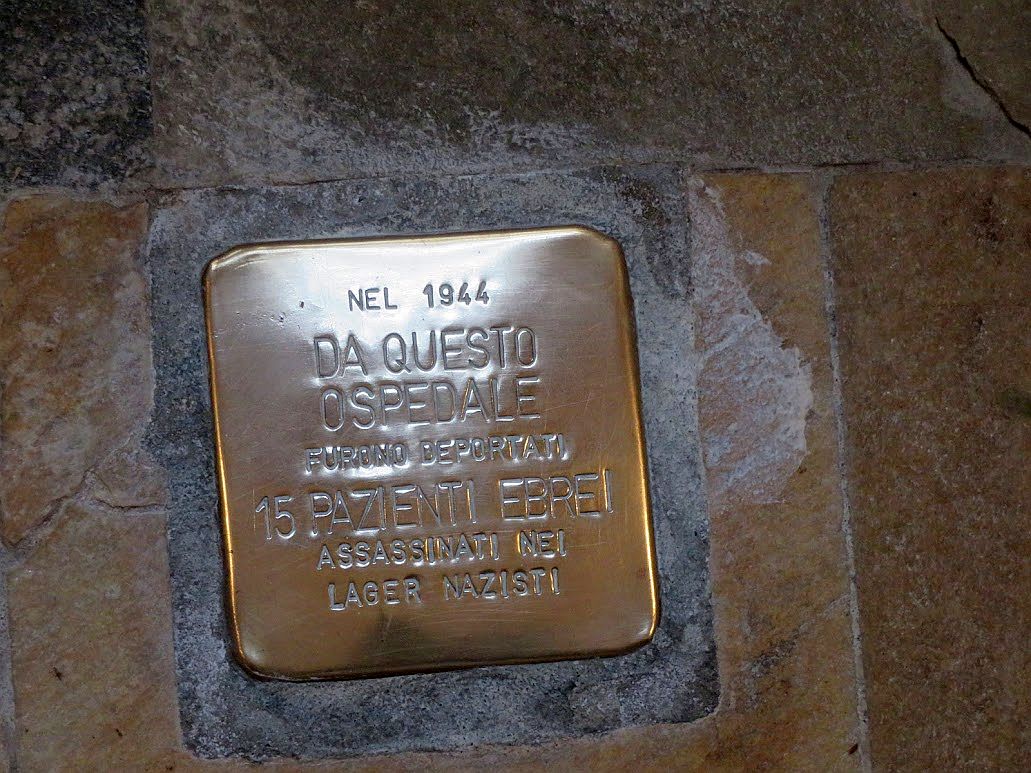
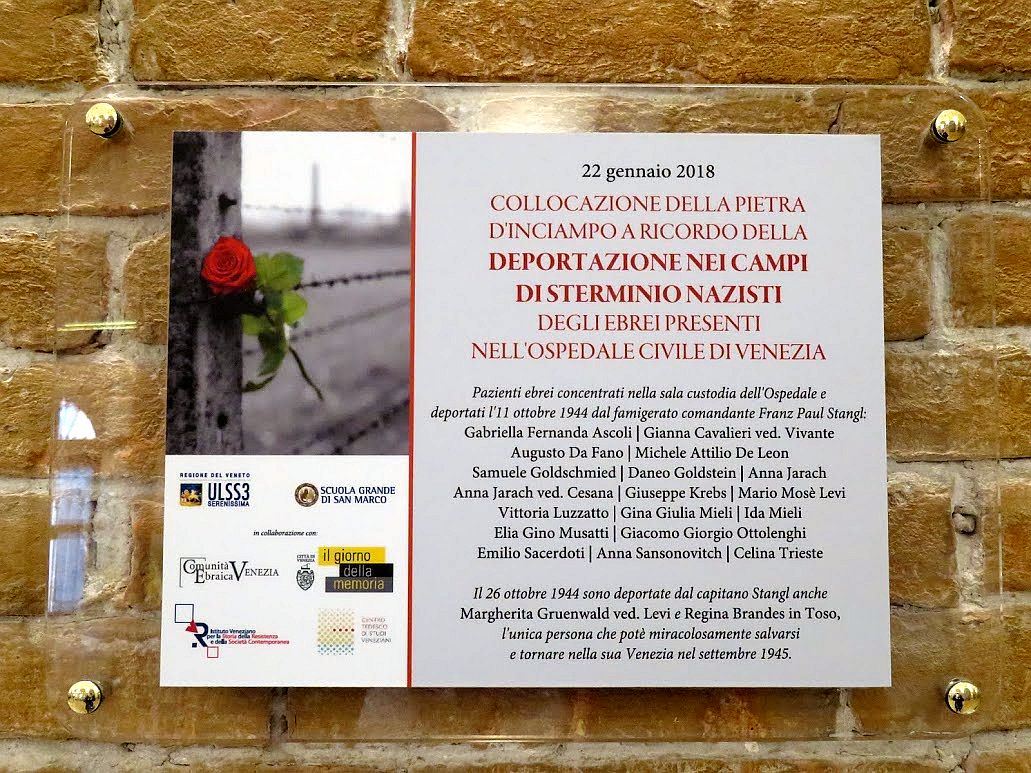
In the autumn of 1943 the Nazi occupiers, under orders from Captain Franz Stangl (already commandant of the Treblinka extermination camp), ordered Jona to submit the names and addresses of the 1,350 Jews in Venice. Their fate was essentially sealed.
Giuseppe Jona had already written his will, in his tiny, precise handwriting, leaving his 1,684 books to the city hospital, and his money and belongings to an extraordinary assortment of groups and organizations serving the poor and needy. He also made a bequest to the family’s elderly servants, who could never have found other income.
It was the night of September 15, 1943. Certain that he would not be able to withstand the torture that would follow his refusal to provide the list, he destroyed every document that could identify members of the community. And then he gave himself a fatal overdose of morphine. His body was found on the 16th, and the death registered on September 17. The entire city was in an uproar; the startled Germans forbade a funeral cortege and basically waited for it all to blow over.
And the 1,350 Jews on the list? In some manner he had enabled 1,100 of them to escape.
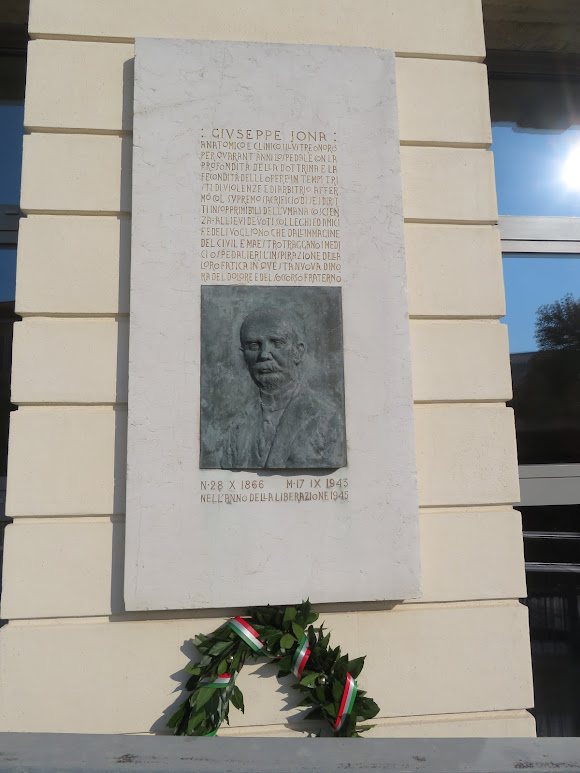

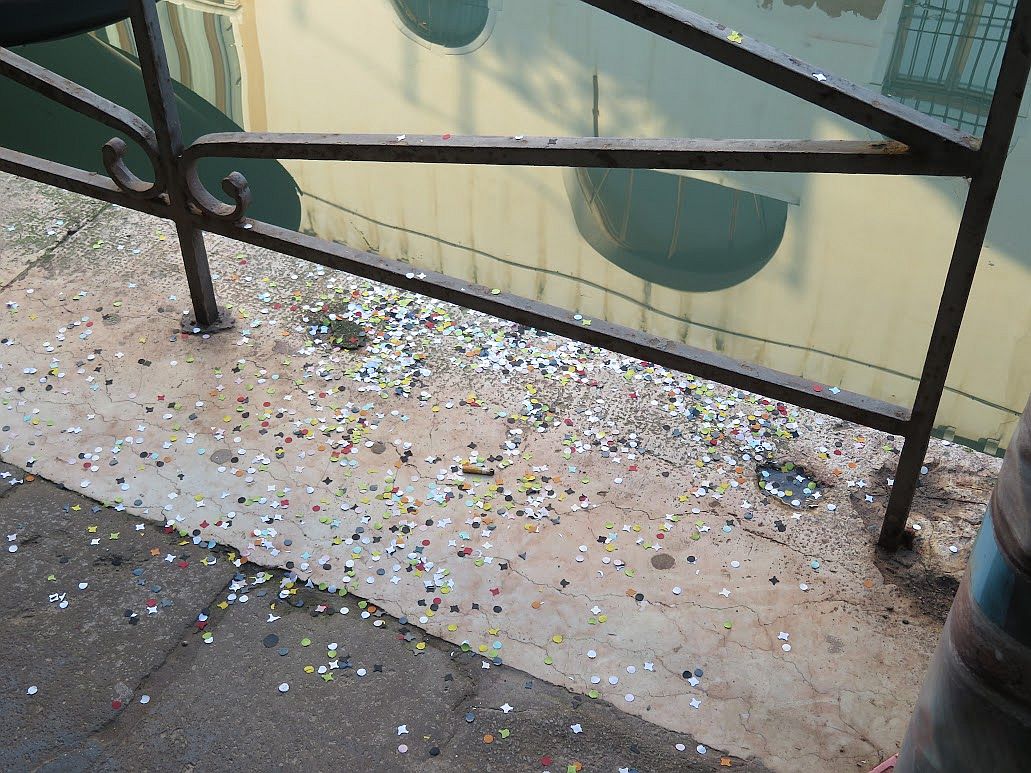
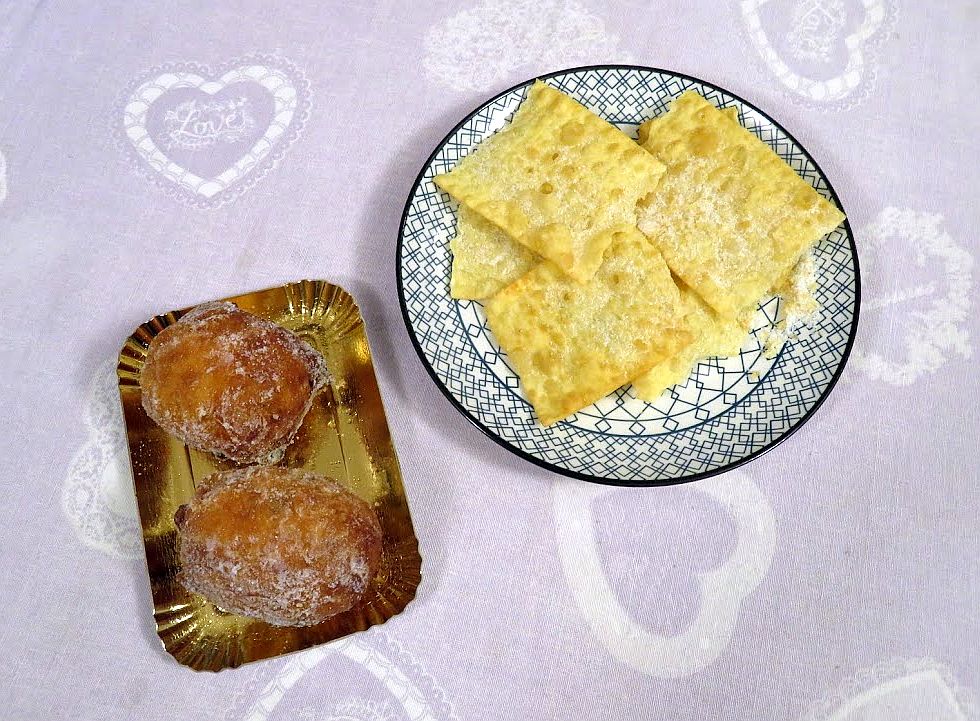
My response to Carnival, after all these years, has gradually diminished to what apparently is now the barest of minimums. (Minima, I know. Thank you to my internal pedant, who never sleeps.)
The basics are: Confetti — here known as coriandoli — masks, or some element of disguise, however small — galani and frittelle. And although the official opening day is tomorrow, about which more later, the premonitory signs have been accumulating. I enjoy those little signs almost more than any of the real events themselves. They give a pleasant sense of the overture being played before the curtain rises. Some blithe and whimsical overture, obviously, nothing Wagnerian, though now that I think of it, a doom-laden session of Wagner might be an amusing soundtrack to the surface frivolity. Which would be better? You decide.
This? https://youtu.be/epnKO1NEzto?si=UJ8TtWVonh3UjXUl
Or this?
I have written various posts over the years about Carnival, as well as an article on the history of this phenomenon for Craftsmanship magazine. More posts can be found stretching back to the frayed edges of time, so I suggest that if you feel like it, just put “carnival” in the search field and search away.
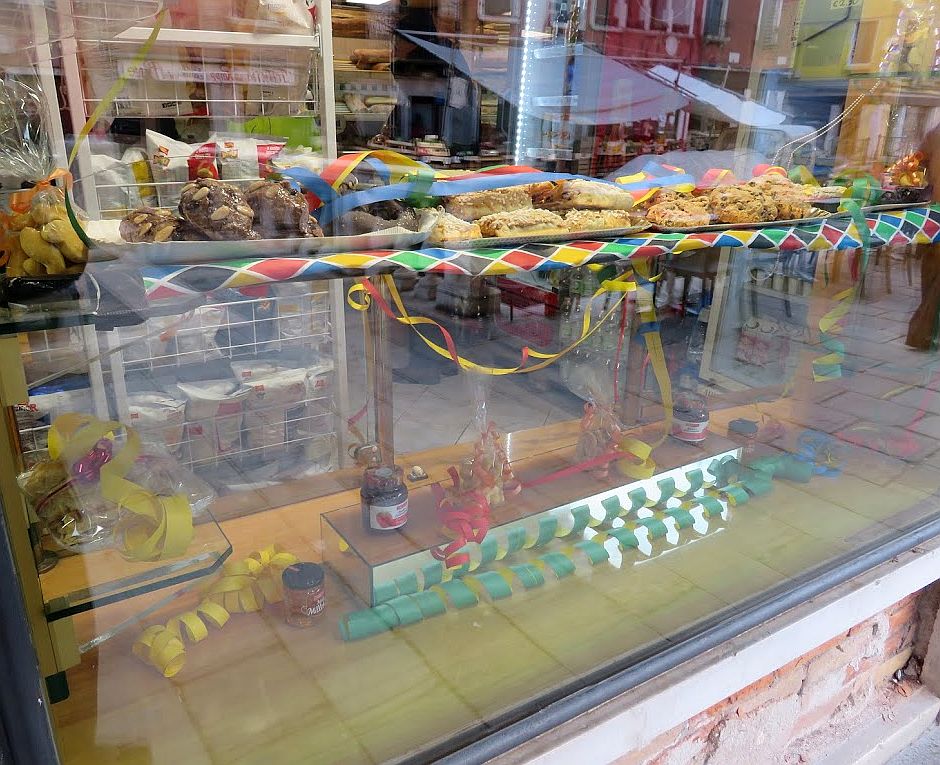
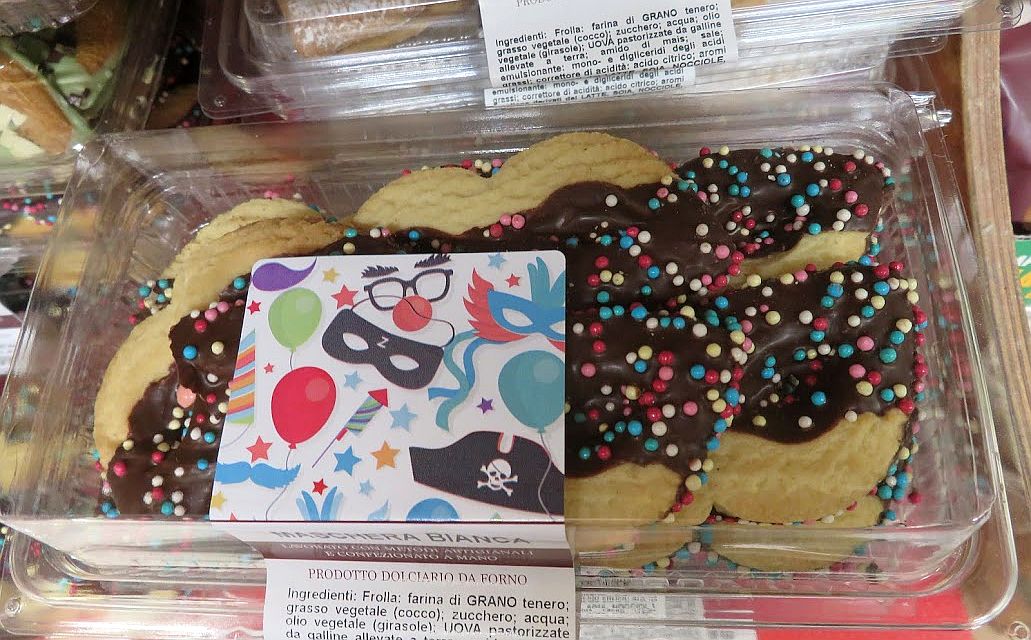
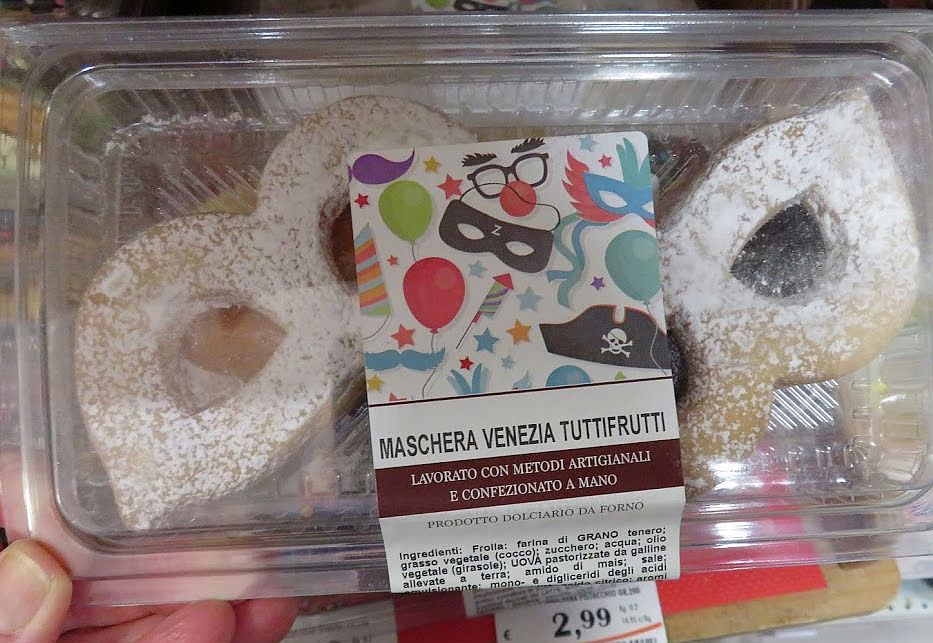
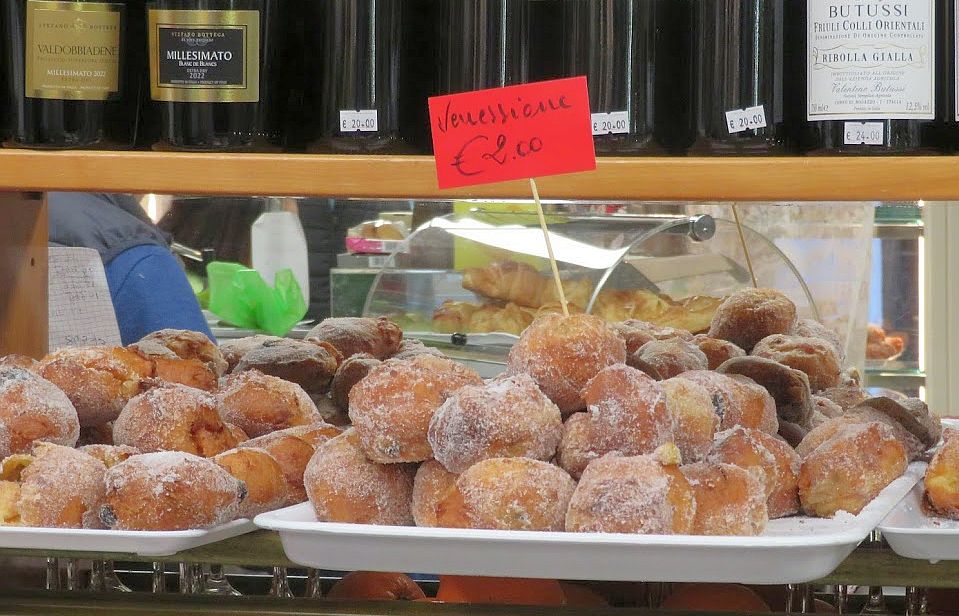
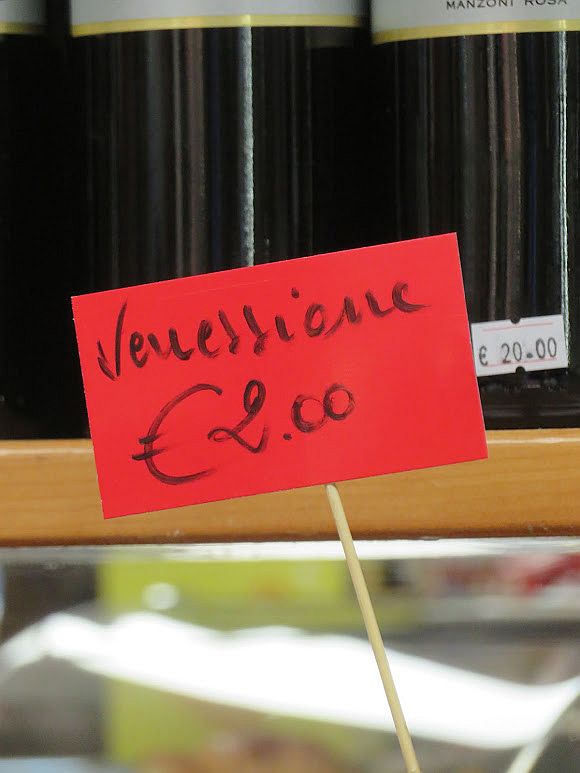

If you feel you must have a mask, you could buy these. Masks for your ears.
I suppose I’ll be checking back on the Carnival circuit before it’s over. Meanwhile, let the chips fall where they may.
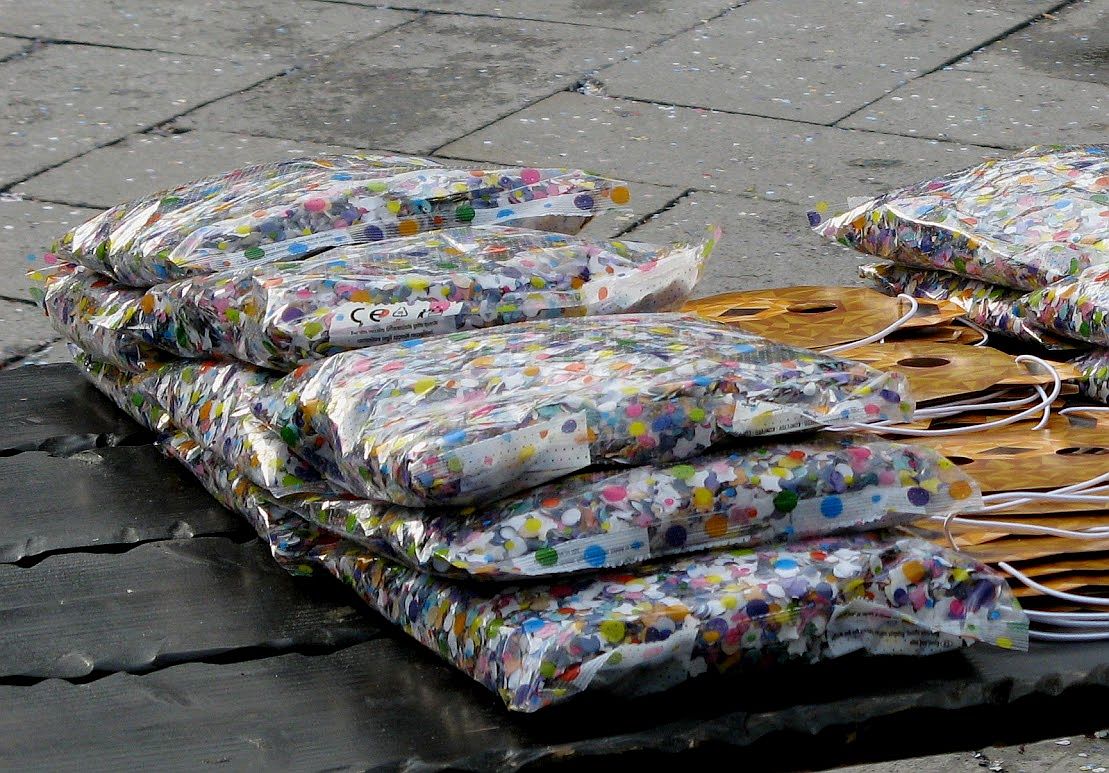
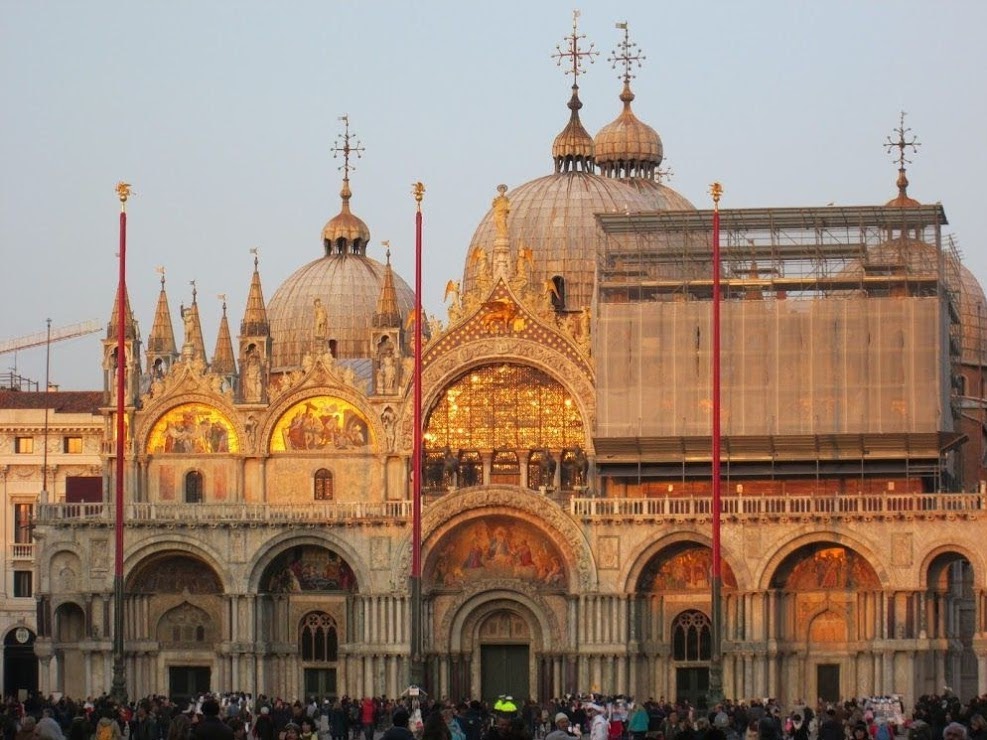
May it be far from me to herald the new year with a broken string or rusty trombone, but although I have almost completely lost interest in reporting on Venice’s daily misadventures, I can’t resist this one. I should, but I can’t, because what happened seems like it ought to raise at least a chuckle. Instead, I think it’s more deserving of a resounding raspberry.
You have heard of the Great Man theory of history? I propose the unfortunate incident of January 6 as an example of the theory, yet to be named, of the phenomenon by which is is almost guaranteed that the simplest task will also prove to be the most important, and the easiest to forget at the moment of crisis. Or put it this way: If something is going wrong, the office tasked with providing measures against wrong-going will be closed for the holiday weekend, call back on Monday.
Brief context: Vast work was completed in November 2022 to encircle the basilica of San Marco with a glass wall to defend it from acqua alta. Too many years, rounded off to the nearest century, of saltwater soaks have damaged the mosaics and marble columns of the narthex, damage I have seen with my own eyes.
Although the MOSE system had finally become functional by then, the lagoon barriers were intended to be raised (it was said) only when the tide was predicted to reach 140 cm above mean sea level. It costs hundreds of thousands of euros each time to raise the floodgates, and they are only useful for a few hours, so the deciders have to decide if the expected height of the water justifies the cost. That is a very tricky calculation to make, as you can imagine.
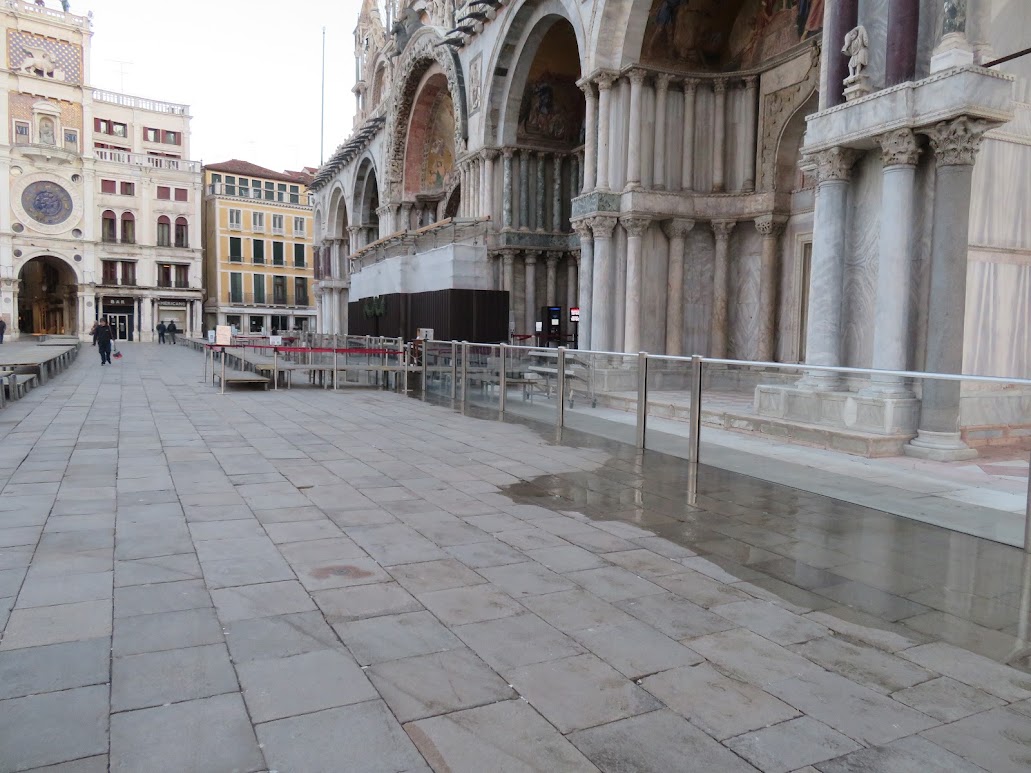
Of course, as soon as that level was stipulated as raising-gates time there came wails and shrieks from all sides, people objecting to the (to them) unreasonably high limit. So the city rapidly backtracked, and the likely level for floodgate-raising dropped by tens; it went down to 130, then 120, then 110, then even 100. It was like an auction in reverse where the bids are decreasing. In any case it appears that the cutoff height seems to be slightly negotiable.
The Piazza San Marco stands at 85 cm above mean sea level, so it is destined to be damp even with the most modest inundations. And the basilica couldn’t be expected to tolerate small water on the stone while waiting to be protected from big water. Therefore the highly excellent idea of protecting the basilica alone was mooted, and budgeted, and scheduled, and accomplished.
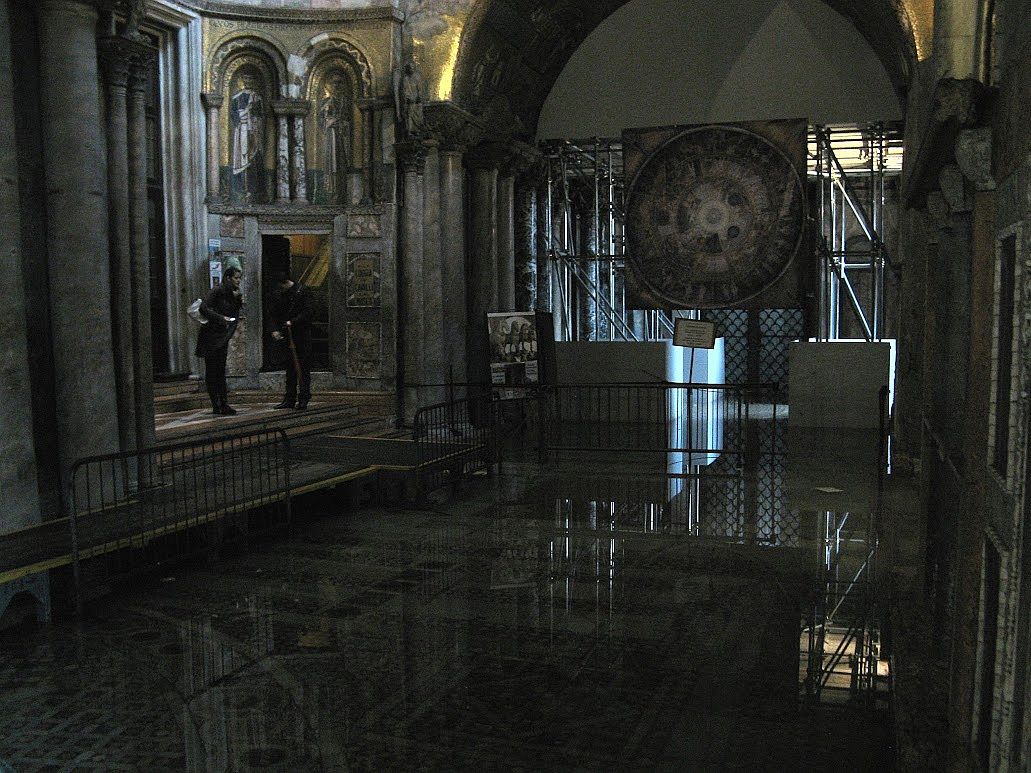
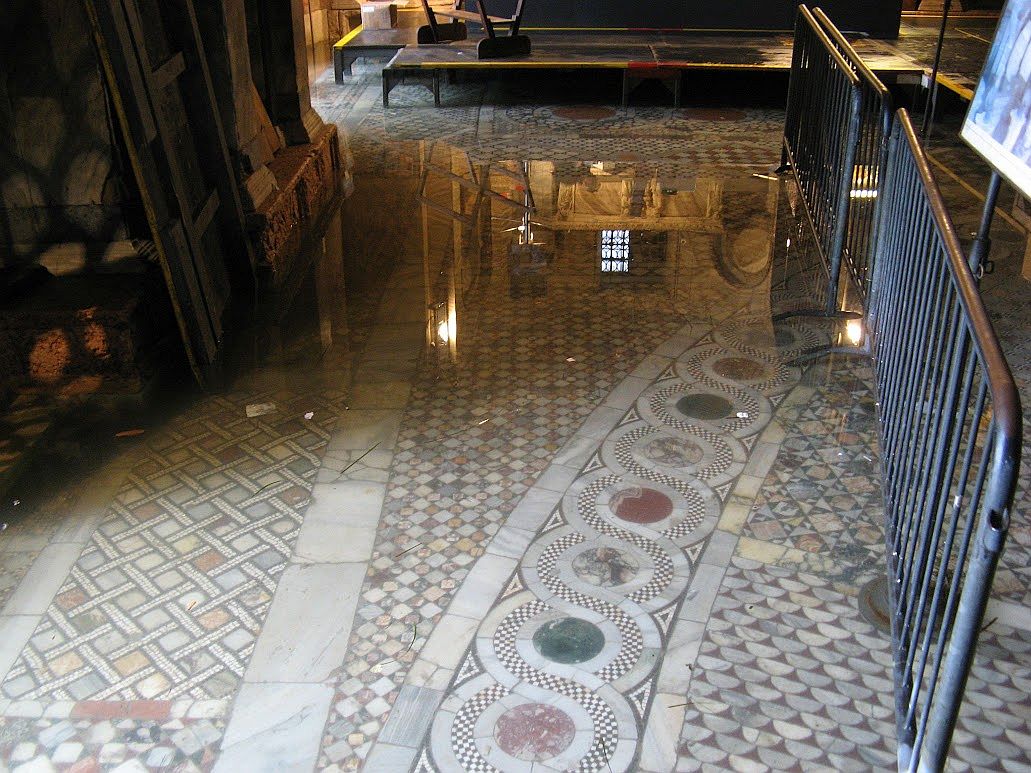
And yet, on the morning of January 6, water rose to a mere 97 cm in the Piazza; not enough to require MOSE to be activated, by any means, but enough to drench the narthex of the basilica just as it had in 1859 (made up. Could have put 1759. 1620. 1492.) The very thing that 5 million euros had been spent to prevent just up and happened all by itself.
Because there are openings in the glass barrier wall to permit people to enter the church. Those openings must be closed with the typical metal barrier, otherwise there’s no point in having the wall. Workers (usually from the two construction companies involved) have to put up the barriers. And somebody has to tell them to do it. But if you haven’t got the workers because they’re all off duty for the holiday weekend, does it matter who is responsible for ordering all hands on deck? Of course it does.
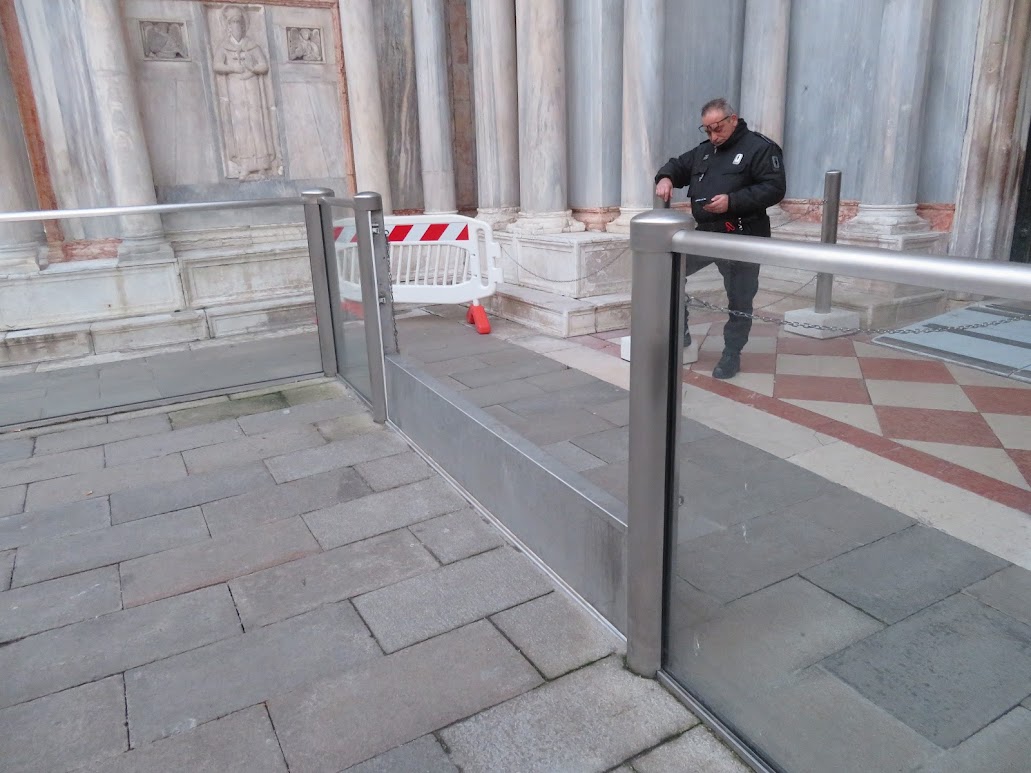
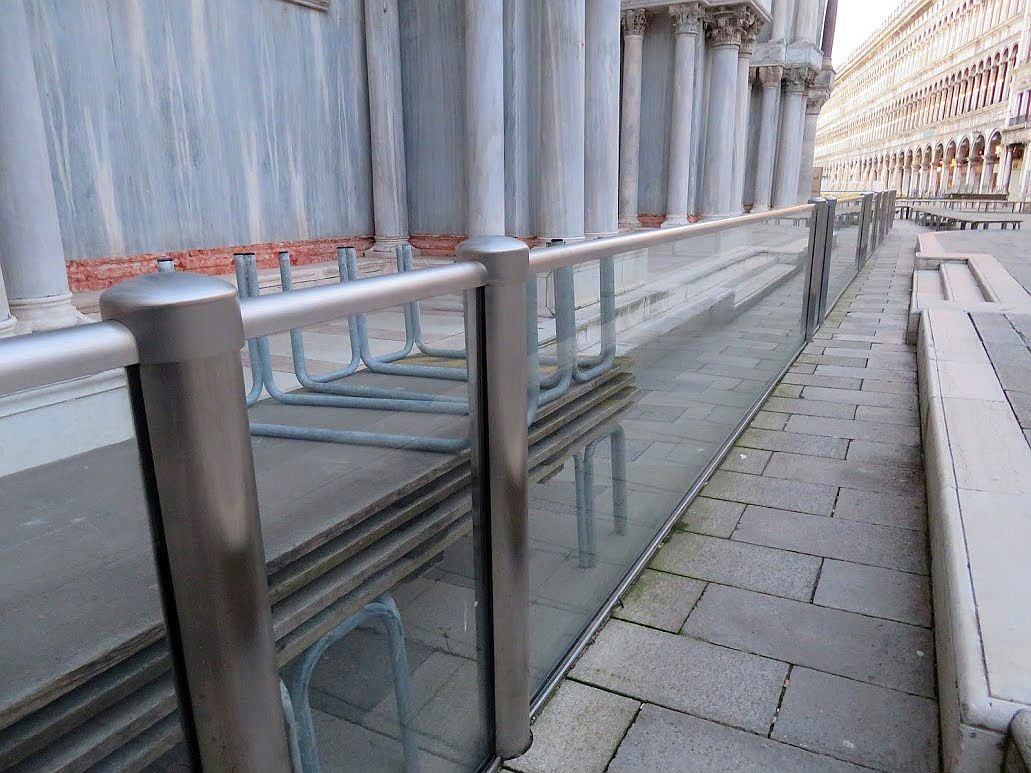
Not made up. The workers were absent. The person who provides for emergency interventions somehow did not check the tide forecast, even though everybody in Venice does it about ten times a day. Perhaps that person didn’t check because he/she/they were also away somewhere. In any case, for anybody to have usefully been on tide-watching duty they’d have had to be at the basilica before 6:00.
Please recall that January 6 was Epiphany, and a Saturday, so plenty of workers and employees of all sorts were probably still enjoying the Christmas holidays.
By the time that personnel at the basilica realized that nobody was coming to insert the barriers to block the tide, the church was taking on water like H.M.S. Indefatigable after striking the reef. The narthex was flooded.
Whoever left the barn door — I mean, basilica-gate — open must have spent a lively interlude in somebody’s office on Monday morning attempting to explain. Anyone listening at the door might well have heard one phrase shouted for 15 minutes: “You had ONE JOB.”
